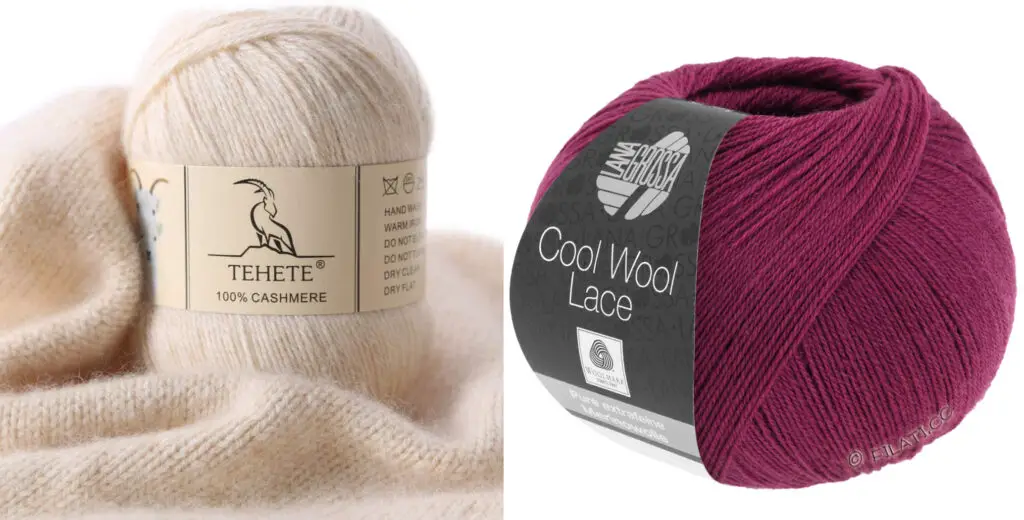When winter arrives, being warm is preferable since the chilly weather slows everything down. It is more difficult to work efficiently on chilly days, which is why wearing the appropriate winter fabrics improves everything.
The warmer you dress, the better you will be able to function. Wool is the most favoured material among the wider population.
We go to shops and online stores and just select out wool, often without even understanding what we’re doing. Wool is classified into numerous categories depending on its origin. There are three major categories of wool: merino wool, normal wool (sheep wool) and cashmere.
And in this article, we will have a closer look at normal wool and cashmere.
 Cashmere is far warmer than any high-quality wool. This is due to the fact that cashmere is a fine, soft fiber combed from the undercoats of a specific type of goat found throughout the Himalayas, where temperatures can drop to -30°C, and their freezing cold habitat means that they grow an incredibly thick, warm coat, making cashmere nearly 8 times warmer than merino wool.
Cashmere is far warmer than any high-quality wool. This is due to the fact that cashmere is a fine, soft fiber combed from the undercoats of a specific type of goat found throughout the Himalayas, where temperatures can drop to -30°C, and their freezing cold habitat means that they grow an incredibly thick, warm coat, making cashmere nearly 8 times warmer than merino wool.
Difference between cashmere and wool
1. Softness and warmth
Wool: Wool fiber is thick, and therefore the roughest. It causes irritation, especially if your skin is sensitive.
Cashmere: Cashmere fibre is hollow and finer than wool, it is lighter. It is clearly the thinnest and has the smallest scale, making it the softest among all the wool fibers.
2. Durability
Wool: Merino sheep’s wool is the toughest of all wools, yet it is also the least soft. Moreover, wool is more durable when compared to cashmere.
Cashmere: Cashmere is no doubt durable, but it requires attention and maintenance to keep the quality of the fabric intact.
3. Piling
Wool: Wool is likely to pill, but because it isn’t as soft as cashmere it is likely to pill less.
Cashmere: The softer the fibre, the easier it will pill. As a result, cashmere is more likely to pill than wool.
4. Maintenance
Wool: Wool does require proper cleaning and drying but it isn’t a delicate fabric, therefore no additional attention has to be given.
Cashmere: Because cashmere is so sensitive, it demands greater attention and care. It is an expensive, delicate fabric so you wouldn’t want it to ruin so easily.
See also: Is Wool Warmer Than Polyester?
Benefits of cashmere in winter
Cashmere is a sought-after and costly material that is often used in luxury garments. It possesses a unique mix of features that have given cashmere its reputation as a luxury material. Let us see what are the benefits it has to offer:
1.) It’s lightweight- In comparison to the warmth it provides, cashmere is a lightweight fabric. Cashmere apparel is never bulky, making it ideal for travel, it won’t take up too much room in your bag.
2.) It is extremely soft- Cashmere is noted for its softness, which gives it a luxurious feel. The smooth fleece underlayer of a cashmere goat is used to make cashmere.
Cashmere has a high loft fibre, i.e., air inside the fibre, resulting in a velvety, plush fabric with a smooth feel. Cashmere softens with age when properly cared for.
3.) It is a stretchable fabric- Cashmere not only keeps you warm without adding weight, but it also has inherent elasticity, allowing you to move freely while wearing it.
4.) Provides good insulation- Cashmere is up to eight times more insulating than typical sheep’s wool, making it an excellent choice for insulation. This is because cashmere goats live in a tough climate with very cold weather conditions.
5.) It has moisture wicking properties- Cashmere has a high moisture content, and as humidity in the air varies, so does its insulation, making it pleasant in all conditions, including hot ones.
The fibres feature water repelling exteriors and water-attracting inside. This implies that it draws moisture out from the body, such as perspiration.
6.) It lets your skin breathe- Unlike synthetic fibres, which may make you hot and sweaty, cashmere lets your body breathe, which aids in temperature regulation, keeping you cozy and comfortable. You can wear cashmere longer with irritation.
7.) It is anti-bacterial in nature- Cashmere has hypoallergenic characteristics, making it a good choice for infant garments and blankets, as well as for individuals who suffer from allergies.
What makes cashmere so expensive?
The precious, delicate wool is taken from cashmere goats just once a year. Cashmere goats have two layers of hair: a super-soft cashmere undercoat that is covered by strong wiry guard hairs, also known as wool, as the topcoat.
Collecting these fibres is a time-consuming job that must be done by hand during the shedding season, resulting in a limited yield.
The difficulty of gathering cashmere explains why it is scarce and considered a premium commodity when compared to wool.
While a sheep may generate at least 3 kilograms of wool each year, a cashmere goat can only produce about 200 grams.
Limitations of cashmere
1.) First and foremost, the cashmere fabric will be more difficult to maintain. It is very tough to clean after stains.
This type of cloth should not be cleaned in a washing machine at home. Either hand wash them gently or it is recommended to get it cleaned by a professional dry cleaner.
2.) Because of the fineness, short fibre, and weak strength of cashmere, we must take extra care when wearing it, avoiding grinding with hard garments and coarse fabric.
When wearing cashmere garments, we cannot pull firmly or perform vigorous works to avoid pressure and pilling.
Some FAQs-
1.) Is cashmere the warmest fabric?
Cashmere is undeniably warmer than wool, yet it is not the warmest fabric. In fact, a 6 layer cashmere sweater would be required to match the warmth provided by fleece.
However, whether cashmere or fleece is more warm has been a source of contention. It is entirely dependent on your personal preferences.
If there was a competition, fleece would win since it is less expensive and more durable than cashmere.
2.) Is cashmere too hot for summer?
Cashmere has the remarkable ability to regulate body temperature. In the winter, it retains your body heat to keep you warm and cozy, and it does the reverse in summer by assisting you in staying cool even as temperatures rise.

Because it is a natural fabric, it allows our skin to breathe, helping us to keep a stable body temperature. Thermal insulating fibres collect perspiration and discharge it as vapour, keeping us cool.
See also: Do Wool Socks Keep Your Feet Cool in the Summer?
Care and maintenance of Cashmere
Here are some tips for you to wash and care for your expensive cashmere garment.
Hand washing cashmere clothes on a regular basis helps freshen and condition the fibres. We all aim to avoid washing cashmere as much as possible and frequently spot-clean to extend the life of the garment.
This is acceptable for everyday use, but before keeping your cashmere apparel for extended periods of time, we recommend giving it a thorough cleaning.
Even though your cashmere garment does not appear dirty, remnants of food, dust, skin, and hair can still lie within the fibres, increasing the likelihood of attracting moths and damaging your favourite fabric.
We always recommend hand-cleaning your cashmere items.
1.) Find a clean bowl or sink, which is free of any food, dirt, cleaning products, or residue that might affect your cashmere.
2.) Soak in lukewarm water with mild detergent.

3.) Turn the garment inside out and gently squeeze clean, roll it if necessary but do not rub or wring. Allow the detergent to do its job, do not exert any force on the clothing. It is advisable to wash each piece of cashmere clothing separately.
4.) Rinse well with lukewarm water. We recommend using water that is the same temperature as the water you used to wash it.
You have to make sure of a few things while drying your cashmere clothing:
1.) Dry it flat over a towel away from direct heat and sunshine. We do not recommend hanging cashmere clothing to dry since the weight of the water might cause it to stretch out of shape.
P.S- Never TUMBLE DRY your cashmere clothing! It will cause shrinking.
2.) Do not wring or twist the clothing to get rid of excess water, be patient and treat it as it should be treated, tenderly and with care. Cashmere will likely soften and improve with age.
To store your cashmere clothing properly:
1.) It should be ideally stored inside out and in a dust-free, well-ventilated place away from direct sunlight.
2.) Before keeping your clothing for any period of time, make sure it has been well washed since dirt, dead skin, or dust might attract moths and other insects.
3.) If you are storing it for the summer, we recommend that you clean it well, get rid of the creases and pills, and carefully place it away.
4.) The same is true for the location where you will store it; make sure there is no dust and it is not humid. To maintain your cashmere in pristine condition, use a storage bag.
Conclusion
If you want something warm but not bulky, cashmere is the way to go. Cashmere garments are often light and breathable. When properly cared for, cashmere has more form resilience than wool.
It does not shrink when cleaned and retains its form better than wool. No doubt the price can be a little too much for people but it is a one time investment as your cashmere apparel can go a long way if being cared for properly.








